 Our World
Our World  Our World
Our World  Movies and TV
Movies and TV The 10 Coolest Stars to Set Sail on The Love Boat
 History
History 10 Things You Didn’t Know About the American National Anthem
 Technology
Technology Top 10 Everyday Tech Buzzwords That Hide a Darker Past
 Humans
Humans 10 Everyday Human Behaviors That Are Actually Survival Instincts
 Animals
Animals 10 Animals That Humiliated and Harmed Historical Leaders
 History
History 10 Most Influential Protests in Modern History
 Creepy
Creepy 10 More Representations of Death from Myth, Legend, and Folktale
 Technology
Technology 10 Scientific Breakthroughs of 2025 That’ll Change Everything
 Our World
Our World 10 Ways Icelandic Culture Makes Other Countries Look Boring
 Our World
Our World 10 Ways Your Christmas Tree Is More Lit Than You Think
 Movies and TV
Movies and TV The 10 Coolest Stars to Set Sail on The Love Boat
 History
History 10 Things You Didn’t Know About the American National Anthem
Who's Behind Listverse?

Jamie Frater
Head Editor
Jamie founded Listverse due to an insatiable desire to share fascinating, obscure, and bizarre facts. He has been a guest speaker on numerous national radio and television stations and is a five time published author.
More About Us Technology
Technology Top 10 Everyday Tech Buzzwords That Hide a Darker Past
 Humans
Humans 10 Everyday Human Behaviors That Are Actually Survival Instincts
 Animals
Animals 10 Animals That Humiliated and Harmed Historical Leaders
 History
History 10 Most Influential Protests in Modern History
 Creepy
Creepy 10 More Representations of Death from Myth, Legend, and Folktale
 Technology
Technology 10 Scientific Breakthroughs of 2025 That’ll Change Everything
 Our World
Our World 10 Ways Icelandic Culture Makes Other Countries Look Boring
Top 10 Fascinating Facts About Castles
Castles aren’t the popular form of residence they once were. Mostly because advancements in civilization have rendered them obsolete. But there was a time when castles were a practical real estate choice, as both a sign and means to protect wealth. Now these sort of accommodations are much more discreet, yet there are plenty of ways to let the world know you’re successful than to build a pile of stone that is visible from far distances (Donald Trump notwithstanding). Let’s go back in time to when castles were in and technology was out. Here are ten interesting castle facts.

Fact: No Toilets (at least not as we know them).
This is perhaps one of the most uncomfortable features of the castle, as if the castle weren’t uncomfortable enough; there were no toilets, but rather little constructions called “garderobes,” a hole through which users would aim their waste products, which would ultimate go through shoots which wound up in the surrounding moats. Adding to the wretchedness, these “bathrooms” were often cold and breezy, hardly conducive to progress. Another gross detail: the “garderobe” was called such as residents would keep their clothing inside, as the odor would repel insects (and any human with a sense of smell, most likely).
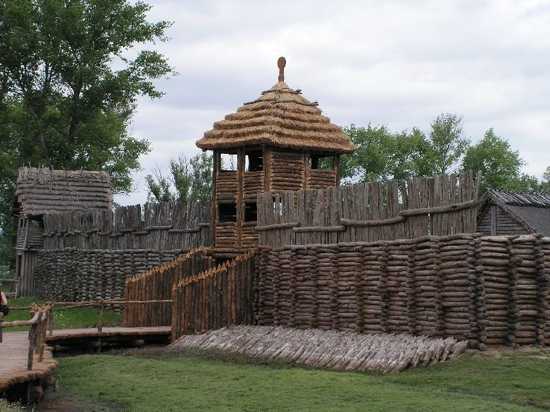
Fact: The First Castles Were Wooden.
When the Normans (who came from Normandy, France) came to England almost a thousand years ago, they built wooden motte-and-bailey-styled castles, which were essentially castles built on a mount, whereby low-level residents and enemies at naturally lower altitudes had to hike up sharp inclines to reach the castle itself. While this was a clever way of putting the earth to good use, the walls which enveloped the castle, as well as the castle itself, were made of wood, which could easily be burnt down.
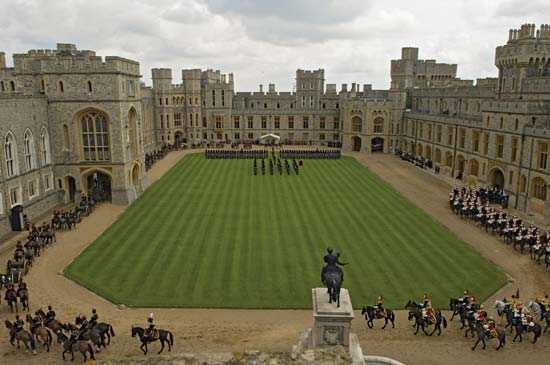
Fact: Windsor Castle is the Oldest Still-Occupied European Castle.
At about 900 years old, Windsor is still occupied by Queen Elizabeth II (one of the many facilities she calls home). Originally, it was a wooden motte-and-bailey-type castle built by William I as the first in a series of nine castles. Later it was renovated with stones and was given a few additions by way of some outer walls and a round tower by a generous Henry II. Sounds similar to the way every elected U.S. President has added a new feature to the White House (most recently with President Obama’s basketball court). Whatever you can do to call it home…
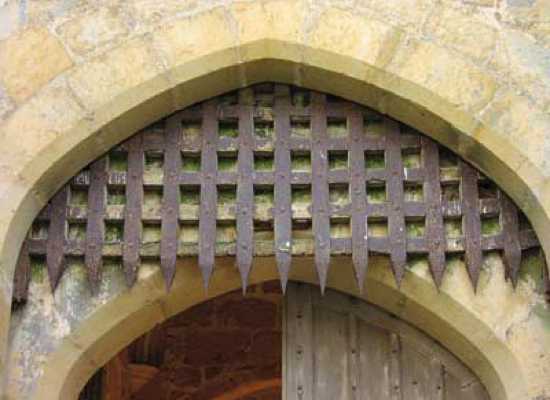
Fact: They Were Built Strictly for Defense.
Just looking at all the apparatus and features of a castle gives you a pretty good idea of its purpose: moats, turrets, ramparts, murder holes, gun and arrow loops, etc. Every single one of these design elements was meant to keep enemies out and down. A few that stand out: murder holes were holes in the ceiling through which scalding liquids would be poured on the enemy. Gun and arrow loops were slits out of which arrows could be fired from with little detection. It seemed foolish in any context to even approach a castle without a written invitation.
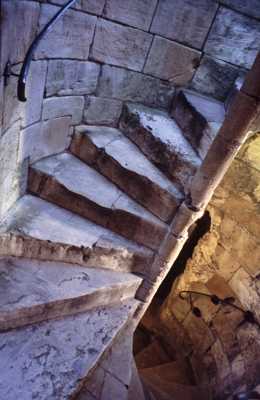
Fact: Stairs Always Turned Clockwise.
Castles were always built with a spiraling staircase that turned clockwise. This was a purposeful design element that served an incredibly practical purpose; the idea was incoming siegers would ascend the stairs, but be given a huge disadvantage in the way of their sword arm, as most people are right-handed. On the other hand, castle occupants descending the stairs would be given the advantage of a staircase designed with their sword-arms in mind. Damned they were though, if they were attacked by an entirely left-handed infantry.
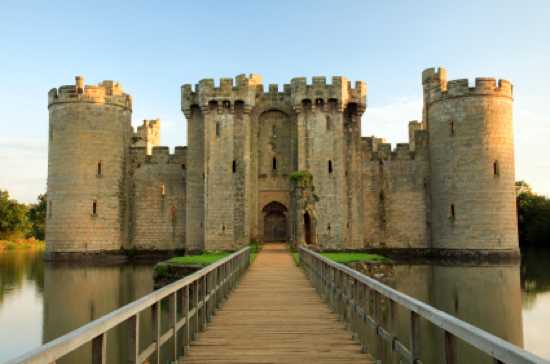
Fact: There Are 1500 Castle Sites in England.
This is according to the Castellarium Anglicanum which is supposed to be the ultimate authority on castles in England and Wales. Note the intentional use of the term “site,” as many of these castles are ruined to the point of invisibility, while over 800 have some remnants, and more than 300 are still standing and structurally intact to a large degree. Also note, there is some debate as to what constitutes a “castle,” as some structures claim to be castles even as they are definitively not so.
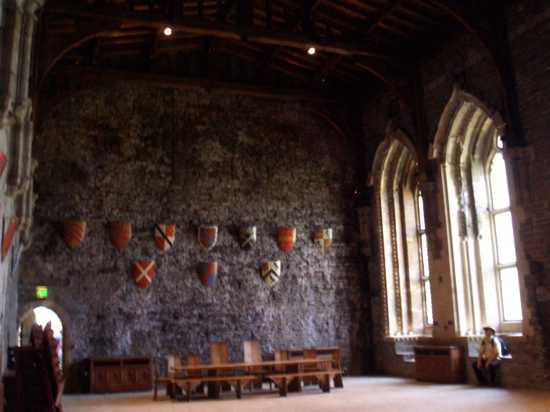
Fact: Castles Used to Be Completely Uncomfortable.
When you think of a castle, you usually think of lavish amenities and grand-scale poshness, but who cares how big the barn is, when its still slathered in mud and smells like horse manure. Similarly, castles were often poorly lit (the sun came through tiny slits for windows); they were damp; and they had poor air circulation (think of all they body heat circling around the place). After all castles were build primarily for defense; creature comforts were on the back-burner. Eventually however, castles came to be outfitted with pretty rugs and artful stained-glass windows as somebody had the bright idea to make these things livable, and to have the interior be a reflection of wealth as well as the exterior.
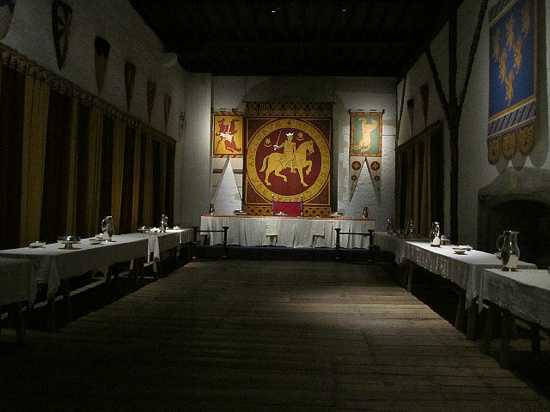
Fact: Eating Was the Primary Means of Entertainment.
The castle was a very boring place. Essentially, all anyone did was stick around making sure nobody touched their stuff. Outdoors, recreational activities included hunting and a whole bunch of combat training. Manly things indeed. Indoors however, it was much more bleak. Chess was one of the few games that did exist in the day, but the number one way to cure boredom was to eat (which people still do to this day). There’d be great feasts full of food and drink (lots of booze), jesters and minstrels. Nowadays, we have T.V. dinners and six-packs. And you don’t need to be of high social standing to enjoy those (and you usually aren’t).
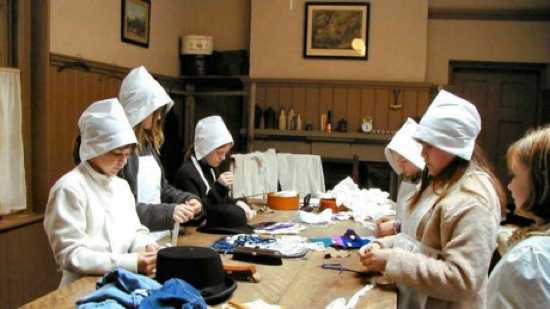
Fact: Personal Servants Received Some of the Luxury.
The personal servants in the Middle Ages were treated like the family dog… and that’s not a bad thing. They got to sleep in the same isolated quarters as the castle owners, which, while the rest of the castle may have been cold and dreary, was heated by a personal fireplace and definitely the warmest place in the castle. While they did sleep on the floor, they were given warm blankets. Elsewhere in the castle, residents of lower social standing slept in the towers and relied upon body heat and light bed dressings for warmth. They only wish they could be the lapdog of the nobility.
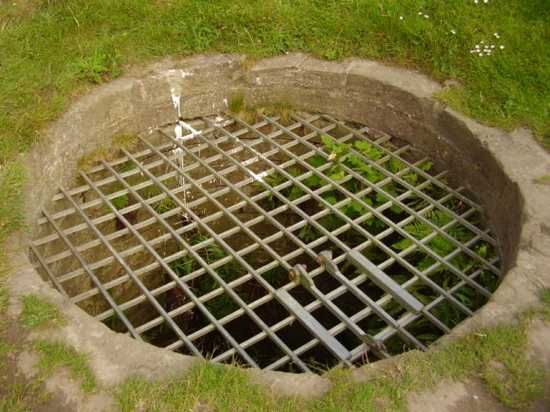
Fact: Achilles Heel? The Well.
The well was like that one weak spot on the Death Star; it was an ultimate source of vulnerability. Sure there were dozens of ways to pour sand and molten substances on oncoming aggressors, and the structural soundness of the castle ensured impenetrability, but if the well wasn’t properly-secured, or if it ran dry, the rest was very useless. Invaders could very well poison the water supply, if left unattended, and virtually guarantee defeat.








